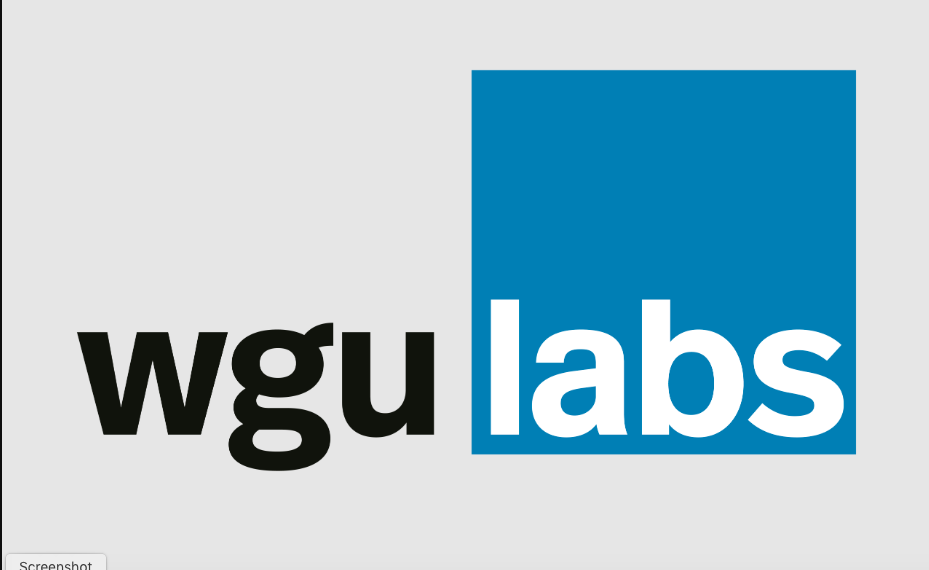The College Innovation Network (CIN), a grant-funded initiative led by WGU Labs, released insights from its first Administrator EdTech Survey last Friday. The survey sheds light on critical challenges administrators face in integrating technology into higher education.
The CIN Administrator EdTech Survey identified four key takeaway areas for institutions and EdTech vendors to improve the EdTech experience for both administrators and students:
- Less than half of administrators are confident in their ability to choose effective EdTech products for their departments or institutions. 48% of institutions conduct technology audits less than once a year and only 47% of administrators feel confident in choosing effective EdTech products for their institutions.
- Fifty-eight percent of administrators prioritize EdTech that integrates with their Learning Management System (LMS). Beyond integration with existing systems, administrators want products that are backed by evidence, which is noteworthy given less than 10% of EdTech products currently on the market are backed by rigorous evidence of their efficacy.
- Seventy-eight percent agreed that instructors will spend more time delivering course content online in the future, but they are split on whether a tech-centric future will be more personalized (54%) or standardized (52%) for students.
- Survey responses suggest a general uncertainty or ambivalence around AI, with respondents split on their attitudes on AI and most of their institutions not having yet established clear policies on the use of AI tools (67% do not have policies around student use; 75% with no instruction policy).

“Higher education is grappling with multiple critical disruptions, and administrators sit at the center of these shifting demands, responsible for making campus-wide decisions that have an outsized impact on students and faculty,” said Omid Fotuhi, Director of Learning and Innovation at WGU Labs. “While administrators are excited about offering new EdTech tools, they are lacking knowledge and data to help them make informed decisions that benefit students and faculty. This survey underscores the need for more resources to inform decision-making, which will help foster the broader adoption of EdTech.”
With responses from 214 administrators representing diverse colleges and universities across the U.S., the survey delves into decision-making processes, attitudes toward educational technology, and approaches to emerging AI technologies. The overarching goal of the survey is to identify challenges in administrators’ experiences and uncover opportunities to streamline the integration of technology into instruction moving forward.
For a full analysis of the survey findings and strategies to improve administrators’ and students’ experience with EdTech, visit www.wgulabs.org/posts/leading-through-change-cin-administrator-edtech-survey.
About the College Innovation Network
The College Innovation Network (CIN) at WGU Labs is a network of higher education institutions committed to addressing the core challenge of promoting belonging and engagement in the modern higher education environment. We’re leveraging technology to build highly engaged learning communities from enrollment through graduation — and beyond. CIN supports educational institutions by identifying areas of need, implementing effective education technology for students, and demonstrating impact through research.
About the CIN EdTech Survey Series
CIN is in a unique position to learn about the student and faculty experience with EdTech by leveraging the diversity of institutions within the Network. The CIN EdTech Survey Series is an annual survey series administered across the Network with the goal of generating valuable insights to help institutions understand how faculty, administrators, and students experience EdTech. These insights can be applied to improve faculty and student experiences, and ultimately bolster the impact of EdTech across the sector. Queries about CIN can be addressed to cin@wgulabs.org.
About WGU Labs
WGU Labs is the nonprofit EdTech consulting, incubation, research, and design arm of Western Governors University, where our mission is to identify and support scalable solutions that address the biggest challenges in education today. For more information, please visit wgulabs.org.
The Princeton Review®—the education services company known for its school rankings in dozens of categories—today reported its 15th annual ranking of undergraduate and graduate schools with the best programs in game design studies.
For the second year in a row, New York University ranked #1 on the undergraduate schools list, which names the top 50 schools. NYU’s Game Design program is based at the university’s Brooklyn campus.
On the graduate schools list, which names the top 25 schools, the University of Central Florida in Orlando earned the #1 spot—up from #2 on the list in 2023.

The top 10 schools on the undergraduate and graduate school lists are below as well as #1 schools by region in seven regions. The complete lists are posted on The Princeton Review website at Top Game Design Schools for 2024.
The Princeton Review’s game design school rankings are based on more than 40 data points derived from the company’s 2023 survey of administrators at 150 schools offering game design courses and/or degrees. Most of the institutions are in the U.S., with two in Canada and four abroad.
The 50-question survey covered four areas: academics, faculty, technology, and career topics. Detailed information about the survey methodology and rankings criteria is here.
PC Gamer, a top online and print gaming publication, has been The Princeton Review’s reporting partner on this project since 2013. The magazine’s May issue, which lands on newsstands today, has a six-page feature on the project. Titled “The Best Game Design Programs Ranked by The Princeton Review 2024,” it reports the two categories of ranking lists with interesting stats as well as fun facts about the schools’ graduates, faculty, and alumni. The feature also includes two articles on video game creation titled “Theorycrafting & Player Choice” and “Live Service Gaming & The Infinite Narrative.”
The top 10 schools on the list “Top 50 Undergraduate Schools for Game Design” are:
- New York University (Brooklyn)
- University of Southern California (Los Angeles)
- Clark University (Worcester, MA)
- University of Utah (Salt Lake City)
- University of Central Florida (Orlando)
- Rochester Institute of Technology (Rochester, NY)
- DigiPen Institute of Technology (Redmond, WA)
- Drexel University (Philadelphia, PA)
- Michigan State University (East Lansing)
- Northeastern University (Boston, MA)
The top 10 schools on the list “Top 25 Graduate Schools for Game Design” are:
- University of Central Florida (Orlando)
- New York University (Brooklyn)
- University of Southern California (Los Angeles)
- University of Utah (Salt Lake City)
- Southern Methodist University (Dallas, TX)
- Abertay University (Dundee, Scotland)
- Clark University (Worcester, MA)
- Rochester Institute of Technology (Rochester, NY)
- Northeastern University (Boston, MA)
- Drexel University (Philadelphia, PA)
The lists by region and the #1 undergraduate and graduate schools on them are:
International: Abertay University (Dundee, Scotland), Undergrad & Grad
Mid-Atlantic: Drexel University (Philadelphia, PA), Undergrad & Grad
Midwest: Michigan State University (East Lansing), Undergrad & Grad
Northeast: New York University (Brooklyn), Undergrad & Grad
South: University of Central Florida (Orlando), Undergrad & Grad
Southwest: The University of Texas at Dallas, Undergrad
Southern Methodist University (Dallas, TX), Grad
West: University of Southern California (Los Angeles), Undergrad & Grad
“The schools that made our lists for 2024 have awesome game design programs,” said Rob Franek, The Princeton Review’s Editor-in-Chief. “Their faculties are superb. Their facilities are state-of-the-art, and their alumni include many of the industry’s most successful game designers, developers, and entrepreneurs. We recommend them highly to all students aspiring to a career in this exciting field.”
Franek noted the exceptional game design experience students gain at the schools. Based on data from The Princeton Review’s 2023 survey for the rankings:
- Seventy-six percent of the students enrolled in game design programs at the undergraduate schools worked on a shipped game as part of their studies. At the graduate schools, that figure was 74%.
- Ninety-seven percent of the students enrolled in game design programs at the undergraduate schools developed an actionable plan to launch a functional game after graduation. At graduate schools, that figure was 96%.
- The average starting salary of students completing their game design studies with a bachelor’s degree from the schools was $64,065. The average starting salary of students completing their game design studies with a master’s degree from the schools was $73,947.
While three-quarters of higher-education trustees (83%), faculty (81%) and administrators (76%) agree that generative artificial intelligence (GenAI) will noticeably change their institutions in the next five years, community college trustees are more optimistic than their community college counterparts, with (37%) saying their organization is prepared for the change coming compared to just 16% of faculty and 11% of administrator respondents.
Those findings are from the 2023-2024 Digital Learning Pulse Survey conducted by Cengage and Bay View Analytics with support from the Association of Community College Trustees (ACCT), the Association of College and University Educators (ACUE), College Pulse and the United States Distance Learning Association (USDLA) to understand the attitudes and concerns of higher education instructors and leadership.

Education ranks among the top five industries expected to see a productivity boost from GenAI, with the sector forecast to see a revenue increase of as much as 4%. From answer bots and virtual tutors to gamified simulations in virtual reality for hands-on immersive learning, GenAI could be the remedy to ongoing challenges from teacher shortages and crowded classrooms to democratizing access to higher education through lower-cost options.
“While GenAI holds exciting potential, this survey signals that higher education has more work to do before it can fully realize its benefits,” said Kimberly Russell, vice president of research for Cengage. “Institutions and educational technology providers need to evaluate how to integrate GenAI equitably in a manner that can enrich human instruction and enable more personalized, captivating learning experiences that expand access and success for all students.”
In addition to a perceived lack of readiness to embrace GenAI in physical and virtual classrooms, the survey found many schools continue to seek creative solutions to declining enrollment, with more than a third (36%) of all administrators expressing an interest in offering more courses online and nearly half (47%) interested in additional hybrid offerings.
“This year’s Digital Learning Pulse Survey suggests that GenAI could help solve some of the ongoing challenges faced by higher education,” said Dr. Jeff Seaman, lead researcher and director of Bay View Analytics, which fielded the survey. “However, the delta between the expected impact of GenAI in higher education and the current ability of these organizations to adapt to this new technology is significant. With so few respondents feeling prepared to adopt artificial intelligence, institutions will need to invest substantial time, effort and resources if they are to remain competitive as this technology becomes mainstream.”
Other survey findings include:
- Courses largely make the grade: Most students at both two- and four-year institutions give their courses a grade of A (48%) or B (39%). Overall, the number of students giving their courses A grades has trended upward, increasing 20% since 2020. Students at two-year institutions who graded their courses highly trended downward during that same time, dropping approximately 10%.
- Rising costs weigh heavily: The rising cost of education is a concern across the board with more than a third of each respondent group – 41% of administrators, 46% of faculty, 35% of trustees and 33% of students – strongly agreeing that the price of a two- or four-year program is becoming out of reach.
- The stress is real: Stress dominates the list of concerns of students, faculty and administrators alike. For students, however, nearly one in three (30%) said they were unaware of support services available to them through their school, and fewer than 1 in 4 (22%) report having used such services. The most common reason for not using these services was students “did not think they could help my personal situation” (34%), followed by being uncomfortable sharing personal information (29%).
- Academic advisors offer value: Most students find value in the academic advisory services provided by their institution, with more respondents from two-year institutions (34%) describing their academic counseling as “excellent,” compared to those from four-year institutions (25%). Students felt less positive about other services offered, including financial services (24%), and health and wellbeing services (24%).
“GenAI offers promise for institutions of higher learning – especially two-year colleges – to expand their course offerings in modern, innovative ways,” said Jee Hang Lee, president and CEO of ACCT, a national organization of community college leaders that helped organize the survey. “We must, however, ensure equitable access and deliberate implementation so all students can benefit from this emerging technology in an inclusive environment that empowers their learning.”
The 2023-2024 Digital Learning Pulse Survey included partners ACCT, ACUE, College Pulse and USDLA.
For more information about the Digital Learning Pulse Survey, click here.
Survey Methodology
These findings come from the Fall 2023 round of data collection of the Digital Learning Pulse Survey. Responses were received from 201 trustees at two-year schools, and 1,126 faculty and administrators and 2,229 students from two-year and four-year schools, representing more than 1,200 institutions from all 50 states and the District of Columbia.

